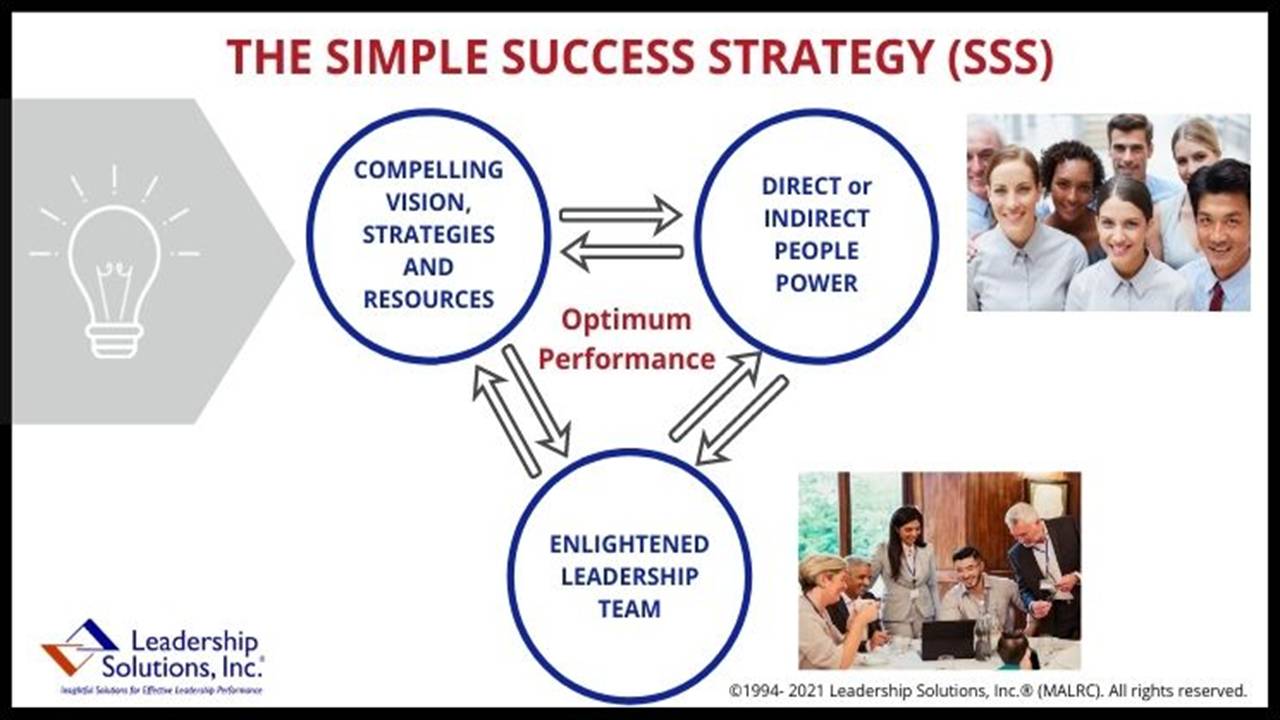by Peter A. Arthur-Smith, Leadership Solutions, Inc.®
“Americans are less eager to do low-paid, often dead-end service and hospitality work…” New York Times Opinion article, ‘The Labor Shortage has Empowered Workers,’ by David Autor, September 2021

Your reality is that you’ve likely not either created the right work environment or didn’t offer the right leadership style, or both. Even then, you believe you’ve tried every conceivable and reasonable option for sustaining optimal momentum and performance. Within regular people management thinking that’s probably the case. But now along comes an alternative philosophy – enlightened leadership (EL) – which challenges you to think anew.You’re absolutely intent on building and sustaining your organization’s momentum, right? You’ve already utilized various conventional options – driven people forward, held people accountable, threatened your people with sanctions, trusted them to do the right thing, used a range of incentives and bonuses, and so on. In every case it has not produced the lasting growth results you’d hoped for. Why is that?
EL opens up a whole new range of possibilities. One particular EL option focuses on four key simultaneous strategies:
» Shared team/organization framework
» Secure team/organization relations
» Compelling team/organization purpose
» Effective team/organization leadership
All four factors need to be optimized simultaneously and interdependently to realize an optimal performance. If one is missing or not operating at its best that will compromise your overall outcome. Let’s review each one in turn, without going into excessive detail, for the purposes of this article.
» Shared Team/Organization Framework – If you’re in a start-up mode, three factors – see Simple Success Strategy(SSS) above – will likely be sufficient. An effective leadership team to propagate an exciting vision covering 6-12 months out– along with its synergistic strategies, sufficient resources and specific outcomes – as well as a capable people team that fully embraces and pursues the journey your lead-team has mapped out for it.
Where you have an ongoing growth or large organization, it will expand into four dimensions covering 3-5 years out. This time your leadership team will articulate a compelling vision and purpose, along with optimal knowhow areas – these can be anywhere from 15-20 in number; sufficient resources – experience shows these can be as many 10 different items, including leader and staff talent; and significant “constituent” and result/impact outcomes. (NOTE: So often “constituent” expectations – covering customers, suppliers, workforce, leaders, community, government and so forth – are overlooked in favor of pure owner/ shareholder financial, economic or operational objectives.) “Outcomes” should have broader, substantial human dimensions, as well, that are beyond our usual monetary, organizational and/or political intentions.
» Secure Team/Organization Relations – Create an environment where people can make and learn from their mistakes. People discover all sorts of things from their failures just as much as from their successes providing it’s done in a constructive manner. They also do well within open, honest, constructive and respectful work environments. This is especially true where the focus is on “what’s going right” versus “what’s going wrong.” Staff members are also more motivated by empowerment and access to smart knowledge rather than overly emphasizing accountability and measurement – the latter two generally demotivate people over time, whereas the former two engage and inspire people.
Included in this factor is rewarding people for their efforts with respectful salaries and benefits – you invariably get what you pay for rather than trying to devalue and squeeze people. Make your staff feel valued and place greater emphasis on team bonuses to induce positive collaboration. Most times, effective teams are far more productive than individual heroes.
» Compelling Team/Organization Purpose – People respond to well-thought-out and insightful purposes, especially when they have a significant impact on society and/or the environment around them. This is additional to accruing profits or having a competitive impact. In this regard, they will be consistently inspired by leaders who walk-the-talk rather than those who are purely self-interested.
»Effective Team/Organization Leadership– Effective leaders are capable of envisioning an exciting journey, positioning the proper resources and capabilities to pursue that journey, engaging their team members to pass related milestones, collaborating with wider actors to reinforce success along the way, and orchestrating sustained momentum in readiness for the next journey. The most effective leaders are visionaries and who possess integrity, courage and wisdom beyond their years.
In our gradual post-pandemic environment, we’re seeing regular New York Times headlines like: “Britain Expected a Jobs Crisis, but Not the One It Got.” It declared: “The pandemic has also caused many people to re-evaluate their work lives and reject a return to normal.” Other articles have pointed out a similar trend here in the US. Younger generations clearly aspire to more than just a “job.” They seek more inspiring work that is fairly rewarded rather than being viewed as just “pairs-of-hands” and focused on drudge work.
As indicated above, incredible organizations can be built around people because they are a dynamic and ever-evolving resource when effectively utilized. Machines and robots have their advantages, including greater consistency with rote tasks; although like animals they cannot thrive or fulfill their possibilities without human monitoring. It’s clear, nevertheless, that human potential and performance is constrained without an optimal work environment. Turn over that conventional management playbook and try a dose of enlightened leadership instead.
To learn more about positioning and pathfinding, talk with:
